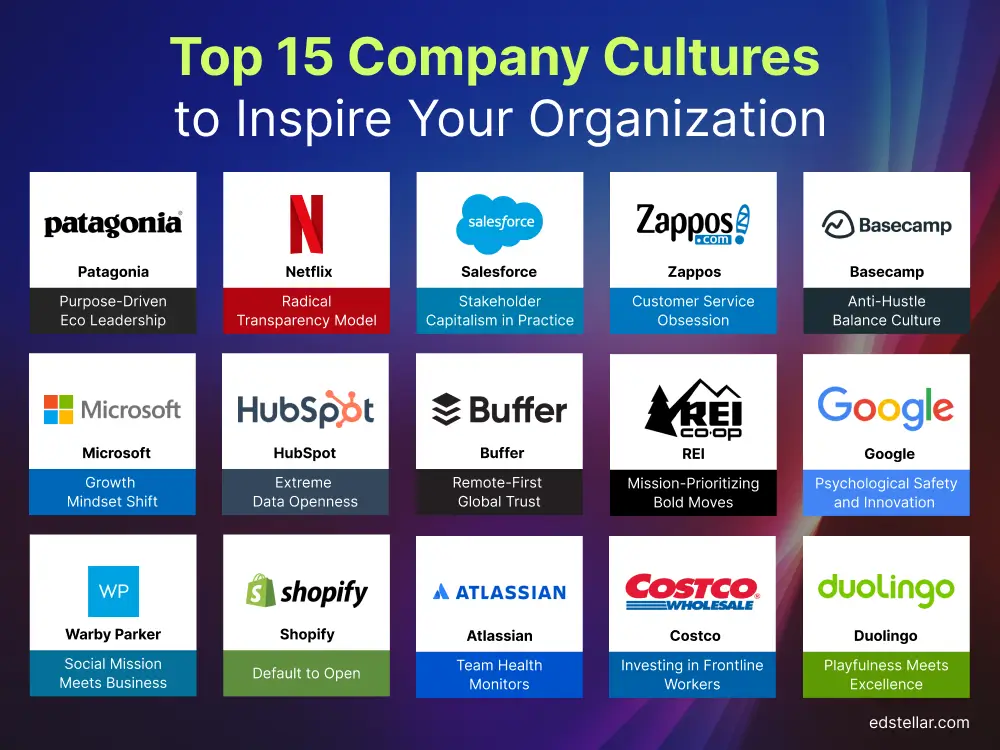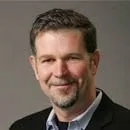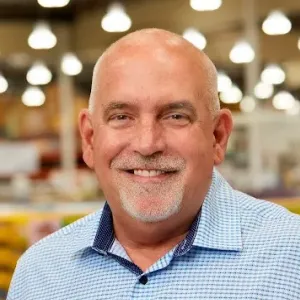
Leaders today understand that culture must go beyond buzzwords; it functions as the operating system of an organization. For instance, Salesforce CEO Marc Benioff emphasizes that he operates his company in partnership with all stakeholders, reflecting a shift toward purpose-driven business.
This connection between leadership and cultural engagement is crucial, especially considering stark data revealing that many companies still lag. Gallup reports that only 34% of U.S. workers feel engaged at work, resulting in $8.8 trillion lost in productivity worldwide.
In contrast, organizations in Gallup's top engagement quartile experience 21% higher profitability. In the competitive landscape of 2025, culture is not optional. Will your company build the same trust, purpose, and empowerment?
Mayer believes that success comes from a combination of strategic hiring and retention, a supportive environment that encourages creativity, and the ability to innovate. But how will you craft a culture that inspires innovation and loyalty? The company cultures listed below inspire businesses worldwide to navigate cultural challenges successfully.
15 Company Cultures to Inspire Your Organization in 2026

1. Patagonia: Purpose-Driven Environmental Action
Patagonia is built on mission, not just margin. Founder Yvon Chouinard famously turned his business into an environmental movement – even donating Patagonia’s profits to climate causes. In announcing new ownership in 2022, he declared the Earth “our only shareholder” and pledged that “ALL profits, in perpetuity, will go to our mission to ‘save our home planet.’” This ethos is evident in everything Patagonia does, from using recycled materials and organic cotton to fighting for public lands and paying employees to volunteer for conservation projects.
This purpose-driven culture has profoundly impacted employees and the company's progress, resulting in a workforce energized by purpose and customers fiercely loyal to the brand. For leaders, the takeaway is clear: define a meaningful mission and embed it throughout the organization.
As Patagonia demonstrates, aligning values and operations – for example, by integrating sustainability into product design and policies – can motivate employees and differentiate the company. When profit supports purpose (rather than eclipsing it), culture inspires advocacy and pride as much as performance.
2. Netflix: Radical Transparency and Freedom
Netflix’s culture mantra is “Freedom and Responsibility.” The company’s internal playbook (a famously downloaded 125-slide deck) preaches almost no rules: employees get unlimited vacation, spend corporate funds freely, and make their own decisions. Crucially, Netflix practices extreme transparency.
Co-founder Reed Hastings notes that “for our employees, transparency has become the biggest symbol of how much we trust them.” In practice, this means all teams see the company performance data and long-term strategy, so workers have full context. Indeed, the company listens, not just via surveys, but real conversations, to fine-tune what flexibility looks like for real people, in real roles.
Reuters reports that Netflix credits this openness, a culture of internal transparency and innovation, and the unusual autonomy given to top performers for much of its success. In other words, when employees understand the full picture and are trusted to deliver, they innovate more.
This radical approach has boosted employee engagement and company growth, with autonomy continuing to champion a high-performing workforce. Leaders can emulate this by sharing information broadly (financials, roadmaps, customer feedback) and by empowering skilled staff to set their own policies. Netflix proves that a flat, candid culture – where people understand the metrics and feel trusted – yields agility and engagement.
3. Salesforce: Stakeholder Capitalism in Practice
Salesforce weaves purpose and profit together through stakeholder values. CEO Marc Benioff argues that businesses must serve not only shareholders but all stakeholders – employees, customers, communities, and the environment. He emphasizes that he runs the company in partnership with all of my stakeholders.
Salesforce built philanthropy and trust into its DNA: it pioneered the 1-1-1 model, donating 1% of its equity, 1% of its product, and 1% of its employees’ time to charity. Benioff insists trust must be the highest value, writing that “nothing is more important than the trust you have with your…customers, employees… and all stakeholders.” The company also created an Office of Ethical Use to ensure products and policies align with values.
The stakeholder model has fueled company growth, with fiscal 2024 revenue reaching $34.86 billion, an 11% increase year-over-year. For leaders, Salesforce’s culture demonstrates that measuring success beyond profit can pay off.
By embedding social responsibility into strategy (e.g., by linking executive bonuses to societal impact or holding company volunteer days), executives signal that all employees have a stake. This cultivates loyalty: staff feel their work contributes to a greater mission. In short, when companies behave as citizens, not just corporations, their culture fosters purpose and trust.
4. Zappos: Customer Service as Culture
Zappos built its brand on service from day one. CEO Tony Hsieh set customer obsession as the core strategy, literally making customer service Zappos’ “main product.” Employees are empowered to do whatever it takes to make customers happy: agents once held a single support call for over 10 hours!
As one BI profile explains, Zappos trains call center reps to use every customer interaction as a relationship builder, not a sales transaction. Staff are encouraged to inject fun and personal flair (“a little weirdness,” as Hsieh puts it) into customer care. The result is legendary loyalty – customers rave not just about the clothes but the human experience of buying.
This service obsession has led to high employee satisfaction and low turnover, resulting in an estimated revenue of $946 million in 2024. Companies can learn from Zappos: make service a core value and align every process to it. Practically, this means hiring people who genuinely care, giving them autonomy (even to spend company money on gifts or upgrades), and rewarding those who turn problems into “wow” moments.
By codifying values (Zappos even crowdsourced its 10 core values) and trusting employees to execute them, the culture consistently “delivers happiness” to both customers and staff alike.
5. Basecamp: Anti-Hustle, Pro-Balance
Basecamp flips the script on the “hustle culture.” Co-founder Jason Fried insists on a sane pace: work no more than a 40-hour week. As he explains, “Working eight hours gives me plenty of time to get to all the work I need to do, and still plenty that I want to do”[14].
Basecamp even advises employees to treat a long flight as an eight-hour sprint (no urgent late-night work). Fried calls the 40-hour work week a “useful constraint” – it forces focus, since time is scarce and respected.
His reasoning behind the 40-hour workweek and the resulting productivity includes:
- More time doesn’t equal more work. Fried argues that work expands to fill the time available. When people are expected to work long hours, they often fill the time with unproductive activities and distractions. By setting a hard limit, employees are forced to be more focused and efficient with their time.
- Rest and reflection are crucial for creativity. Fried believes that time away from work is essential for recharging and gaining new perspectives. He has stated that if you want to be better at work, it’s good to stay away from work. Extended breaks, like the four-day summer workweek and paid sabbaticals offered at 37signals, are designed to prevent burnout and spark creativity.
- Long hours are a “mark of stupidity.” In a post titled “Being tired isn’t a badge of honor,” Fried wrote that sustained exhaustion is not a rite of passage for success. Scientific studies suggest that sleep deprivation impairs decision-making and patience, affecting performance and interactions with colleagues.
- Focus on results, not hours. Rather than glorifying employees who put in long hours, Fried celebrates those who can produce great work within a normal 40-hour work week. His philosophy prioritizes the quality and intelligence of the work, not the sheer quantity of time spent.
- Sustainable, long-term success. Fried believes that a “growth at all costs” mindset and an expectation of long hours are not sustainable in the long run. 37signals, which has been profitable for over two decades, is built on a "long, slow run" approach that keeps employees happy and prevents high turnover.
Fried’s work philosophy is summarized by the idea that business should be simple, and overcomplication is detrimental. For him, a saner pace of work leads to a healthier company, happier employees, and better results.
Employees enjoy generous paid vacation and sabbaticals. This “slow down to speed up” approach has kept teams fresh, creative, and loyal, with revenue reaching $280M in 2024.
Leaders should take note: burnout is corrosive to culture. Setting healthy boundaries (no Slack messages past 6 pm, for instance) and valuing rest signals to employees that their well-being matters. Basecamp’s example shows that by institutionalizing balance, companies can actually improve long-term productivity and retention, avoiding the costly churn of overwork.
6. Microsoft: Growth Mindset Transformation
Under Satya Nadella’s leadership, Microsoft underwent a cultural reboot. Nadella famously challenged the old “know-it-all” mentality, declaring that the company would become a “learn-it-all” organization. This meant tolerating failure, encouraging curiosity, and collaboration. Microsoft began hosting company-wide hackathons, rotating engineers across divisions, and publicly sharing what teams were working on – fostering curiosity.
The HR team notes that Microsoft’s explicit goal became a growth mindset, saying, “We are explicit about what we aspire to, which is this growth mindset.” As a result, innovation accelerated (for example, Azure and Office teams began integrating more seamlessly).
The growth mindset has driven company progress, with Microsoft Cloud quarterly revenue of $36.8 billion, up 21% in FY2024, and Azure and other cloud services growth of 22%. For leaders, Nadella’s example highlights the power of modeling learning at all levels. Practical steps include rewarding skill-building, destigmatizing mistakes (post-mortems without blame), and encouraging cross-skilling.
By publicly committing to continuous improvement, managers can transform a stagnant culture. Microsoft’s revival shows that a deliberate shift toward learning – embedding training programs, cross-team projects, and open communication – can reignite energy and performance company-wide.
7. HubSpot: Radical Transparency Through Data
HubSpot’s co-founders made openness a ritual. Co-founder Dharmesh Shah explains, “At HubSpot, we practice ‘extreme transparency,’ making almost every piece of information about the business available to every employee.” In practice, this means employees see revenue targets, customer acquisition costs, and even compensation bands on internal dashboards.
Meetings are fully shareable, and founders answer any questions. This radical candor has helped employees feel deeply involved. Shah notes that giving people this insight “makes them feel more invested” and attracts top talent. Leaders can mirror this by defaulting to sharing: publishing key metrics on an internal site, allowing company-wide access to strategic plans, and holding open Q&As after major announcements.
By flooding the organization with data, HubSpot ensures nobody is in the dark; everyone can challenge assumptions and contribute ideas. The result is a culture of trust and accountability: when people truly understand the 'why' behind targets, they take ownership of the results.
HubSpot’s model proves that transparency isn’t a nice-to-have – it’s a powerful culture-builder, with total revenue reaching $2.12 billion in 2024, marking a 25.44% year-over-year increase and professional services revenue up 24% in Q4 2024. HubSpot’s model proves that transparency isn’t a nice-to-have – it’s a powerful culture-builder.
8. Buffer: Remote-First Pioneer
Buffer has been remote for a long time before it became mandatory. CEO Joel Gascoigne made Buffer fully distributed in 2013 and today describes it as “an all-remote company that sets a high standard for transparency.” With team members in 23 countries, Buffer emphasizes asynchronous communication and results over face time.
It shares everything publicly, not just company data, but even salaries (they publish every team member’s formula and raises online). This approach requires trust: employees work flexible schedules as long as objectives are met. The payoff is access to global talent and high employee satisfaction. Leaders can adopt Buffer’s lessons by investing in solid collaboration tools (chat, project wikis) and normalizing virtual meetings.
Equally important is eliminating micromanagement: Buffer counts on written updates and frequent check-ins rather than hovering. The ethos is that location and hours don’t matter; effectiveness does. By embracing remote work with clear norms and transparency, Buffer has built a culture of autonomy.
This remote-first ethos has improved employee wellbeing, with 68% considering remote work a positive experience and 36% saying career growth is easier remotely. In 2025, any leader can take a page from Buffer’s playbook: enable flexibility and openness to create a resilient, motivated workforce.
9. REI: Closing on Black Friday
REI’s culture literally puts employees first. In 2015, the outdoor co-op made national news by closing all stores on Black Friday – traditionally one of the biggest sales days – and paying employees to spend the day outside with friends and family. This bold move was no token gesture: Black Friday had been a top‑5 sales day for REI, so closing it involved a real sacrifice.
Yet the payoff has been massive in authenticity and morale. Customers admired the stance (60% say it improved their opinion of REI), and workers felt valued. One REI creative director explains it as “putting our people and overall mission above short-term sales.” For other companies, the lesson is to act on your mission, not just talk about it. REI shows that policies aligned with values – whether it’s paid volunteer time, environmental sabbaticals, or no-work holidays – reinforce trust and motivation.
Staff see that leadership lives the mission, which breeds loyalty. The #OptOutside campaign has become an annual tradition: every year, over 50,000 people pledge to spend Black Friday outdoors, embodying the company ethos.
#OptOutside has driven company progress, closing 2024 with $3.53 billion in net sales and 25 million members. Leaders can emulate REI by identifying signature actions (a charity day, a policy break, etc.) that demonstrate they mean what they say.
10. Google: Psychological Safety and Innovation
Google’s research into culture (Project Aristotle) taught a critical lesson: psychological safety drives innovation. The study of hundreds of teams found that the most effective teams weren’t the smartest or most diverse, but the ones where members felt safe to speak up without fear.
Google engineers now cultivate this norm: teams explicitly set guidelines to encourage questions, admit failures, and tease out dissenting views. Managers are trained to invite ideas (“What are we missing?”) and thank contributors, ensuring no question is too small. This openness is a cornerstone of Google’s iterative product culture (think free product Googlers or weekly TGIF all-hands with live Q&A).
According to HBS research, psychological safety is “mission-critical” in today’s work environment. Leaders can borrow this approach by running regular team check-ins, anonymous suggestion channels, or “failure postmortems” that focus on lessons rather than blame. In practice, building trust means rewarding risk-taking and listening earnestly. When employees know their voice matters – even if it’s a criticism – creativity flourishes.
Psych safety has enhanced team performance, with high-safety teams achieving 10 times more patents and lower turnover. Google’s culture shows that by making it safe to innovate, a company unlocks far more potential than through perks or edicts alone.
11. Warby Parker: Social Mission Meets Business
Warby Parker was founded as much to do good as to sell glasses. Co-founder Neil Blumenthal emphasizes that the company’s social purpose was “intrinsically linked” to profit from the start. He explains: “We believed in the power of brands to influence culture and society. Brands can stand for something much more than the individual product.”
In practice, Warby Parker embeds its mission into its operations. For every pair of glasses sold, another is distributed to someone in need, and it partners with nonprofits to provide vision screening in underserved communities. Office culture reinforces this: staff are encouraged to volunteer and see firsthand the impact of their work.
The result is a workforce that feels connected to a cause and customers who love buying with purpose. Leaders can apply this by integrating social initiatives into core activities – for example, tying product launches to community campaigns or committing a percentage of profits to charity.
The social mission has driven expansion, opening 41 new stores in 2024 and achieving 15.2% full-year net revenue growth. Warby Parker’s example shows that a clearly communicated purpose (and visible action behind it) can attract talent and consumers alike. When a brand stands for something larger, the culture aligns around shared values, and the company’s story becomes a market differentiator.
12. Shopify: Default to Open
Shopify espouses an open-by-default philosophy. CEO Tobi Lütke set the tone early on: internal communications and data are transparent unless there’s a compelling reason to restrict them. Business Insider notes that a core tenet of Shopify’s culture is “default to open,” meaning it values transparency and sharing information with employees.
In practical terms, all-hands meetings are global and unscripted, design docs are viewable by everyone, and even C-suite strategies are discussed internally. This openness builds trust – employees know decisions happen in the open, so surprises are rare.
For other companies, the lesson is to break down silos: make project plans, goals, and even setbacks visible. Regular town halls or AMA (“ask me anything”) sessions help. By keeping the curtain open, Shopify reduces the rumor mill and anxiety: people “get it” and feel respected. In turn, teams collaborate more because they know what others are doing.
Leaders in 2025 can replicate this by critically examining what information truly needs to be confidential; often, more can be shared than assumed. When everyone has context, culture thrives on collective ownership rather than secrecy.
Openness has amplified collaboration, with Shopify Collective seeing over 300% increase in retailer usage year-over-year in 2024, Q4 revenue up 31%, and GMV growth of 24%.
13. Atlassian: Team Health Monitors
Atlassian puts team well-being on the agenda. The company developed the “Team Health Monitor” – effectively a survey that teams use regularly to assess themselves. Atlassian describes it as “like medical check-ups for a team’s well-being,” measuring factors such as trust and communication, as well as work-life balance.
Each team privately scores attributes (e.g., whether goals are clear, leadership is supportive) and then together creates an action plan to improve. This practice forces honest conversation; underperforming teams pinpoint issues (such as unclear roles or a lack of feedback) before they fester. By continuously monitoring team health, Atlassian treats culture as a metric rather than a soft concept.
Other leaders can follow suit by routinely gauging group morale – through tools like pulse surveys, retrospectives, or peer reviews – and acting on the results. The key is openness: Atlassian even publishes its playbook so any team (inside or outside the company) can run these exercises. The outcome is greater resilience: teams catch problems early, celebrate what’s working, and reinforce a culture of trust and continuous improvement as a matter of course.
Health monitors have supported revenue growth to over $4.3 billion in FY2024, with the company vaulting past $5.2 billion in FY2025.
14. Costco: Investing in Frontline Workers
Costco’s culture is famously pro-worker, a legacy continued and amplified under current CEO Ron Vachris, who rose from a frontline forklift driver in 1987 to the C-suite, embodying the principle that investing in employees drives exceptional customer service and business success.
Vachris has upheld co-founder Jim Sinegal’s vision of treating workers as partners, not commodities, by boosting wages well above industry norms, reaching over $31 per hour for most U.S. hourly staff in 2025 amid union negotiations, and enhancing benefits such as health coverage and retirement plans.
In a landmark move, Vachris announced a new employee deal that included wage increases, additional vacation perks, and protections against labor violations, signaling his commitment to frontline empowerment even as the company faces union pressure.
These policies reduce hiring and training costs while building a seasoned, motivated workforce that goes the extra mile for members.
This investment strategy has sustained exceptionally low turnover at about 8% annually for hourly staff (versus ~60% industry average), slashing operational costs by up to 72% according to Deloitte analyses, and propelled fiscal year 2025 net sales to $269.9 billion, an 8.1% increase year-over-year.
For leaders, the lesson is powerful: a “good jobs” approach enhances performance. Practically, this means regularly evaluating pay and benefits, creating clear career ladders with internal promotions (as Vachris exemplified), and fostering respect through flexible scheduling on slow days.
Costco proves that treating employees as valued partners, not disposable resources, pays dividends: loyal staff boost customer satisfaction and membership growth to nearly 137 million, fueling long-term profitability.
15. Duolingo: Playfulness Meets Excellence
Duolingo’s culture is unabashedly fun. CEO Luis von Ahn calls it “wholesome but unhinged,” a phrase even in the employee handbook. The idea is a controlled tension: employees should be kind and mission-driven (“wholesome”) but also embrace creativity and a bit of chaos (“unhinged”).
Early Duolingo teams literally made things up as they went along, never taking themselves too seriously. That spirit shows in the product (a green cartoon owl, language memes, celebratory confetti after every lesson) and in the workplace (regular hackathons, playful meetings, costumes on Halloween).
Despite the whimsy, Duolingo still demands excellence: every feature is data-tested, and employees track rigorous performance metrics. The blend has fueled Duolingo’s growth (over 800 million learners) and kept attrition low – people enjoy working there. Leaders can emulate this balance by infusing routine with joy (teams might start meetings with a funny anecdote or reward creative risk-taking) while upholding high standards.
Playful rigor has spiked company growth, generating $748 million revenue in 2024, a 40.8% year-on-year increase, with 103 million monthly active users. Duolingo shows that a lighthearted culture does not undermine excellence; on the contrary, it keeps people engaged. By fostering an environment where ideas are encouraged and fun is woven into daily life, teams stay energized and loyal.
Conclusion
Strong cultures consistently drive outsized success: purpose ignites loyalty, trust unlocks innovation, and bold investments in people propel engagement, retention, and growth far beyond competitors. In 2025, audit yours. Does it spark clarity, trust, and a sense of mission? Prioritize it now: codify values, share insights, embed impact. The payoff? Unstoppable teams and enduring wins.
Edstellar serves as a one-stop, instructor-led corporate training and coaching solution that addresses organizational upskilling and talent transformation needs globally. With over 2000 tailored programs across disciplines, including Technical, Behavioral, Management, Compliance, Leadership, and Social Impact, Edstellar equips organizations with the tools to enhance their culture.
Training programs like the HR Excellence Program, Leadership Excellence Program, and Corporate Culture Training Course are designed to strengthen employee engagement and foster a high-performance environment. When leaders do this, culture becomes a self-reinforcing asset: employees stay engaged, customers become advocates, and innovation accelerates.
In short, culture isn’t just a nice-to-have. It’s the foundation on which higher profitability can be built and the best path to sustainable success.
Explore High-impact instructor-led training for your teams.
#On-site #Virtual #GroupTraining #Customized

Bridge the Gap Between Learning & Performance
Turn Your Training Programs Into Revenue Drivers.
Schedule a ConsultationEdstellar Training Catalog
Explore 2000+ industry ready instructor-led training programs.

Coaching that Unlocks Potential
Create dynamic leaders and cohesive teams. Learn more now!


Want to evaluate your team’s skill gaps?
Do a quick Skill gap analysis with Edstellar’s Free Skill Matrix tool

Transform Your L&D Strategy Today
Unlock premium resources, tools, and frameworks designed for HR and learning professionals. Our L&D Hub gives you everything needed to elevate your organization's training approach.
Access L&D Hub Resources.svg)
.svg)



.svg)
















.svg)
.svg)
.svg)
.svg)

